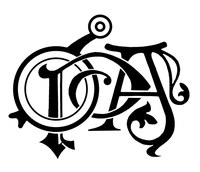Project

OPA. Lost and Anonymous Works (III-XV Century)
A large portion of Late Antique and Medieval Latin literature has been transmitted to us anonymously or as pseudepigrapha; furthermore, countless works have either been lost or have survived in only small fragments. These texts are significant witnesses – at times even more significant than works of known as well as renowned authors – of the gradual cultural change that took place from the decline of the Ancient world to the end of the Middle Ages; and yet, they still remain by and large uninvestigated.
The aim of OPA. Lost and Anonymous Works in the Latin Tradition from Late Antiquity to the Early Modern Age (III-XV Century), a project funded by the Fondo integrativo speciale per la ricerca (FISR) of the Italian Ministry of University and Research, is to examine this corpus of anonymous, pseudepigraphic, lost, and fragmentary works, and to develop tools which will enable to deepen our knowledge of the Late Antique and Medieval Latin textual tradition.
The project is being carried out by the Departments of Humanities of the Universities of Bologna (Dipartimento di Filologia Classica e Italianistica), Udine (Dipartimento di Studi umanistici e del Patrimonio Culturale) and Salerno (Dipartimento di Studi Umanistici), in collaboration with the Società Internazionale per lo Studio del Medioevo Latino – International Society for the Study of Medieval Latin Culture (SISMEL) in Florence.
As well as promoting an editorial collection of studies and editions focussing on anonymous texts, the main goal of the project is to develop an open access database, containing data on at least 6000 anonymous and pseudepigraphic works. The research team based in Bologna is also involved in the study of the spurious works attributed to Bonaventure, which constitute a representative case of pseudepigraphic tradition.
Currently, the website hosts around 6000 entries in their entirety, with over 5700 of them available in the integrated version on Mirabile (https://www.mirabileweb.it/home), while the OPA series has reached its ninth volume (https://www.sismel.it/catalogo/collane/opa-opa-opere-perdute-e-anonime-secoli-iii-xv).
Starting from March 2024, OPA continues its research activities at SISMEL, particularly in collaboration with the University of Bologna, by expanding the database and organizing seminars. A volume on the pseudepigraphy of Thomas Aquinas (edition of texts and repertory) is being prepared, along with an international conference in Bologna (September 18-20, 2025) titled «The New Pseudepigraphy of the 12th-14th Centuries».

OPA Database
OPA project aims to realize a scientific digital repertory of anonymous texts and pseudoepigrapha. Until some years ago, an overall mapping of these works would have been hampered by the lack of a digital infrastructure which collected the main information. Rather, today there is access to the rich databases of the Archivio Intergrato per il Medioevo (AIM) managed by SISMEL. From the AIM was extracted a first list of 6000 anonymous works and pseudoepigrapha with some bibliographical references. All these texts will be filed to see clearly title, incipit, explicit, literary genre, complete bibliography, chronotope, types of transmission and manuscripts. Such a repertory will offer scholars a valid and up-to-date starting point for undertaking their own specialised research.

Pseudo-Bonaventure
In the framework of the OPA project, the pseudo-epigraphic phenomenon is to be studied in a new way through the corpus of spurious works attributed to Doctor Seraphicus. The first part of the work aims to catalogue the pseudo-Bonaventurian texts in the database according to the above-mentioned methods (titles, incipit, explicit, bibliographical references, list of manuscript witnesses, competing attributions, etc. are provided for each work) and on the basis of the fundamental editorial and pinacographical bibliography (Quaracchi edition, repertory of the Capuchin Distelbrink). A second stage of the research intends to clarify, with methodological awareness, the critical-textual situation of some of these texts in order to develop a phenomenology of Bonaventurian pseudo-epigraphy. The research carried out on some selected works will therefore be presented in a volume, which will also provide an overview of the texts related to Bonaventure and a list of new manuscript acquisitions.

Pseudo-Thomas Aquinas
In line with the previous undertakings of the OPA project, the focus on the pseudo-epigraphic phenomenon continues with the study and cataloging of works attributed to Thomas Aquinas. The work is structured in two phases: the first involves cataloging the pseudo-Thomistic texts within the database, adhering to the inclusion and cataloging criteria that have characterized OPA thus far, based on previous scholarly and erudite bibliography, along with new scientific findings. The second phase involves the study and edition of selected texts, chosen to represent the full range of writings related to the pseudo-epigraphic phenomenon associated with the Doctor Angelicus.